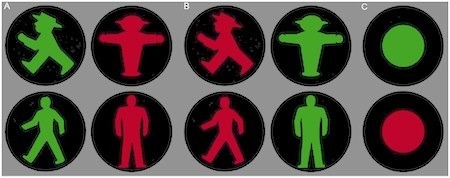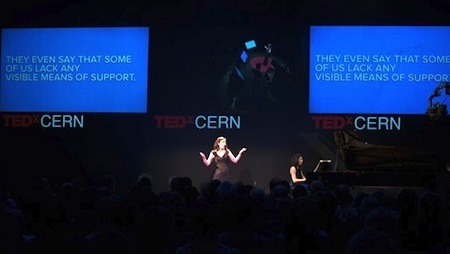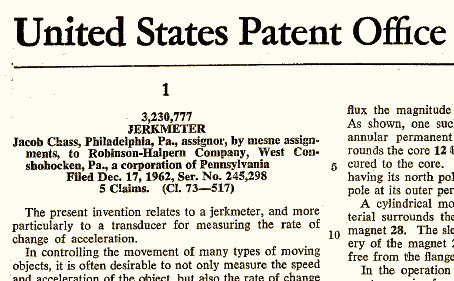Marc Abrahams's Blog, page 489
May 28, 2013
Further cow magnetic alignment findings
There are further findings in the ongoing international detective effort to understand the extent to which cows are inclined to align themselves more or less magnetically. A new study presents details:
“Cattle on pastures do align along the North-South axis, but the alignment depends on herd density,” Pavel Slaby, Kateřina Tomanova, M. Vacha, Journal of Comparative Physiology A, epub May 23, 2013. The authors, at Masaryk University, Czech Republic, report:
“Magnetic alignment represents the simplest directional response to the geomagnetic field and a growing body of evidence of animals aligning their body positions according to geomagnetic lines whether at rest or during feedings is accumulating. Recently, with the aid of Google Earth application, evidence of prevailing North-South (N-S) body orientation of cattle on pastures was published (Begall et al. PNAS 105:13451-13455, 2008; Burda et al. PNAS 106:5708-5713, 2009). Nonetheless, a subsequent study from a different laboratory did not confirm this phenomenon (Hert et al. J Comp Physiol A 197:677-682, 2011). The aim of our study was to enlarge the pool of independently gained data on this remarkable animal behavior. By satellite snapshots analysis and using blinded protocol we scored positions of 2,235 individuals in 74 herds. Our results are in line with the original findings of prevailing N-S orientation of grazing cattle. In addition, we found that mutual distances between individual animals within herds (herd density) affect their N-S preference-a new phenomenon giving some insight into biological significance of alignment.”
(Thanks to investigator Mark Dionne for bringing this to our attention.)

“Topical Trends in a Corpus of Persuasive Writing”
If you list everything that’s topical, trendy and persuasive, your list might include things you’d prefer it not to include, suggests this study:
“Topical Trends in a Corpus of Persuasive Writing,” Michael Heilman and Nitin Madnani [pictured here], Research Report ETS RR-12-19, October 2012. The authors write, topically and perhaps persuasively: ”Many writing assessments use generic prompts about social issues. However, we currently lack an understanding of how test takers respond to such prompts…. we analyzed topical trends in test takers’ responses and correlated these trends with those found in the news.”
 Here, says the study, are the 14th through 20th top “spiking” topics appearing in essays during the period 2006-2010 [the study comments " Note that function words such as however and insofar appear because of a particular trend in the test administration schedule itself, which is not the focus of this report"]:
Here, says the study, are the 14th through 20th top “spiking” topics appearing in essays during the period 2006-2010 [the study comments " Note that function words such as however and insofar appear because of a particular trend in the test administration schedule itself, which is not the focus of this report"]:
even 870,807 0:5504
admittedly 56,121 0:5425
beijing 5,386 0:5402
insofar 13,394 0:5371
twitter 3,196 0:5305
however 971,417 0:5280
sum 147,507 0:5270
BONUS (unrelated): TV station WOKV (in Jacksonville, Florida) explained, in an April 15, 2010 report, the tangled concept called “corpus selecti“:
WOKV Legal Analyst Mark Rubin says there’s a legal term called Corpus Selecti, which says you have must have a body to convict someone of a murder, but it’s not absolute.
Here is a screen capture of the beginning of WOKV’s report:

May 27, 2013
mini-AIR May Issue: Pottos, and more pottos
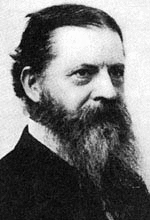 The March issue of mini-AIR (our monthly newsletter — it’s a wee little supplement to the magazine) just went out. You can read it online, too. Topics include:
The March issue of mini-AIR (our monthly newsletter — it’s a wee little supplement to the magazine) just went out. You can read it online, too. Topics include:
Pottos
Putrid-Defect-of-Butter Poet
More About Pottos
L’Allure du Potto
and more
It also has info about upcoming events.
Mel [pictured here] says, “It’s swell.”
mini-AIR is the simplest way to keep informed about Improbable and Ig Nobel news and events. Just add yourself to the mini-AIR list, and mini-AIR will be emailed to you every month.

Lacan meets Austin Powers (comedic skin eruptions)
If you’re interested in Lacanian ‘drives’, the philosophical aspects of skin, and Austin Powers, then you can do no better than consult chapter two of ‘Skin, Culture and Psychoanalysis’ (Palgrave Macmillan, 2013) which explores connections between all three. The chapter, entitled ‘Comedic skin eruptions: A Psychoanalytic reading of Austin Powers’ is authored by Sheila Kunkle, who is an assistant professor at the College of Individualized Studies of Metropolitan State University in St. Paul, Minnesota, US.
“
[...] in this paper I propose that a psychoanalytic reading of the films of the comedian Mike Myers (Austin Powers: International Man of Mystery [1997], The Spy Who Shagged Me [1999] and Austin Powers in Goldmember [2002]) can uncover a certain contemporary manifestation of the [Lacanian] drives, especially as they appear as exaggerated skin anomalies in almost every main character (played by Myers himself): the large facial scar on Dr. Evil, and his clone Mini-me (Verne Troyer), Power’s overly-hirsute chest, Fat Bastard’s bulging then sagging skin (before and after extreme weight loss), Goldmember’s eczema and the giant mole on the face of Number Three (played by Fred Savage).”
Substantial excerpts from the chapter may be found here: or, alternatively, here:
BONUS VIDEO Ig Nobel prize winner (Physics, 1998) Dr. Deepak Chopra M.D. and Mike Myers (Dr. Evil) discuss enlightenment, consciousness and humour.

The three officially Improbable parts of TEDx CERN
Here are the three officially Improbable parts of TEDx CERN, which happened in May 2013. [We have posted them here separately — this post gathers all three into one place.]
Soprano Maria Ferrante and pianist Alice Martelli perform the song “Some Galaxies”, introduced by Sergio Bertolucci (CERN’s Director for Research and Scientific Computing). The song, part of the mini-opera”Ig Grosso Kaboom,” premiered in 1997 as part of that year’s Ig Nobel Prize Ceremony.
Marc Abrahams, editor of the Annals of Improbable Research and founder of the Ig Nobel Prize ceremony, does a TEDx Talk about how all research — real research, that is — is improbable.
Maria Ferrante and Alice Martelli perform the song “Caffeine”. The song, part of the mini-opera”Chemist in a Coffee Shop,” premiered in 2011 as part of that year’s Ig Nobel Prize Ceremony.
See all the parts, Improbable and otherwise, of TEDx CERN at the TEDx CERN web site.

May 25, 2013
The caffeine song, performed at TEDx CERN
At TEDx CERN, Maria Ferrante and Alice Martelli perform the song “Caffeine”. The song, part of the mini-opera”Chemist in a Coffee Shop,” premiered in 2011 as part of that year’s Ig Nobel Prize Ceremony.
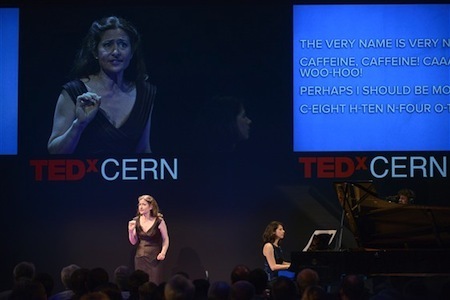
See all the parts, Improbable and otherwise, of TEDx CERN at the TEDx CERN web site.
This was the third of three officially Improbable parts of TEDx CERN. the first was the song “Some Galaxies”. The second was Marc Abrahams’s TEDx Talk about improbable research.

Clear Safety Signs: E Germany wins versus W Germany
Safety signs are one area in which, according to this study, East Germany ultimately triumphed over West Germany:
 “Should I Stay or Should I Go – Cognitive Conflict in Multi-Attribute Signals Probed with East and West German ‘Ampelmännchen’ Traffic Signs,” Claudia Peschke, Bettina Olk [pictured here], Claus C. Hilgetag, PLoS ONE 8(5), May 24, 2013, e64712. The authors, at Jacobs University Bremen, Germany, University Medical Center Hamburg-Eppendorf, Germany, and Boston University, USA, explain:
“Should I Stay or Should I Go – Cognitive Conflict in Multi-Attribute Signals Probed with East and West German ‘Ampelmännchen’ Traffic Signs,” Claudia Peschke, Bettina Olk [pictured here], Claus C. Hilgetag, PLoS ONE 8(5), May 24, 2013, e64712. The authors, at Jacobs University Bremen, Germany, University Medical Center Hamburg-Eppendorf, Germany, and Boston University, USA, explain:
“In post-unification Germany, lingering conflicts between East and West Germans have found some unusual outlets, including a debate of the relative superiority of East and West German ‘Ampelmännchen’ pedestrian traffic signs. In our study, we probed the visual efficacy of East and West German Ampelmännchen signs with a Stroop-like conflict task. We found that the distinctive East German man-with-hat figures were more resistant to conflicting information, and in turn produced greater interference when used as distractors.”
[image error]
Detail from the study: “Effective reaction time (RT*) depending on task and stimulus conditions. RT* was longer for the shape than color task, incongruent than congruent stimuli, and West compared to East signs. Error bars represent standard errors.”
(Thanks to investigator Geoffrey Miller for bringing this to our attention.)

Marc Abrahams’s TEDx CERN talk, about improbable research
At TEDx CERN, Marc Abrahams, editor of the Annals of Improbable Research and founder of the Ig Nobel Prize ceremony, does a TEDx Talk about how all research — real research, that is — is improbable.
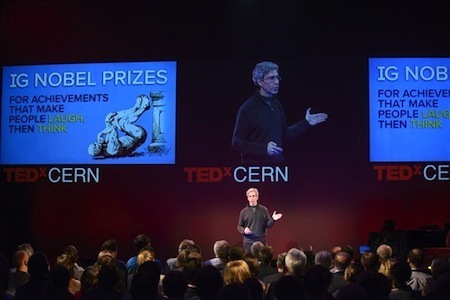
This was the second of three officially Improbable parts of TEDx CERN. the first was the song “Some Galaxies”.

The song “Some Galaxies”, performed at TEDx CERN
At TEDx CERN, soprano Maria Ferrante and pianist Alice Martelli perform the song “Some Galaxies”, introduced by Sergio Bertolucci (CERN’s Director for Research and Scientific Computing). The song, part of the mini-opera”Ig Grosso Kaboom,” premiered in 1997 as part of that year’s Ig Nobel Prize Ceremony.
This was the first of three officially Improbable parts of TEDx CERN.

May 24, 2013
Patent for a Jerkmeter
If you study jerks in a formal way, you are probably familiar with jerkmeters. Here’s a comforting treasure, the 1966 patent for one of the most beloved of all jerkmeter designs:
3,230,777 JERKMETER. Jacob Chass, Philadelphia, Pa., assignor, by mesne assignments, to Robinson-Halpern Company, West Conshohocken, Pa., a corporation of Pennsylvania Filed Dec. 17, 1962, Ser. No. 245,298 5 Claims. (CI. 73—517)
The present invention relates to a jerkmeter, and more particularly to a transducer for measuring the rate of change of acceleration. In controlling the movement of many types of moving objects, it is often desirable to not only measure the speed and acceleration of the object, but also the rate of change of acceleration. Since a change in the acceleration of a moving object results in a sudden movement or jerk, devices for measuring such a change are referred to as “jerkmeter.” To have a jerkmeter which has a long life and which is not subject to breakdown, it is desirable that the jerkmeter be free of any moving parts. Also, it is desirable that the jerkmeter be relatively small in size and inexpensive in cost.
It is an Object of the present invention to provide a novel jerkmeter….
(Thanks to investigator Stanley Eigen for bringing this to our attention.)


Marc Abrahams's Blog
- Marc Abrahams's profile
- 14 followers



